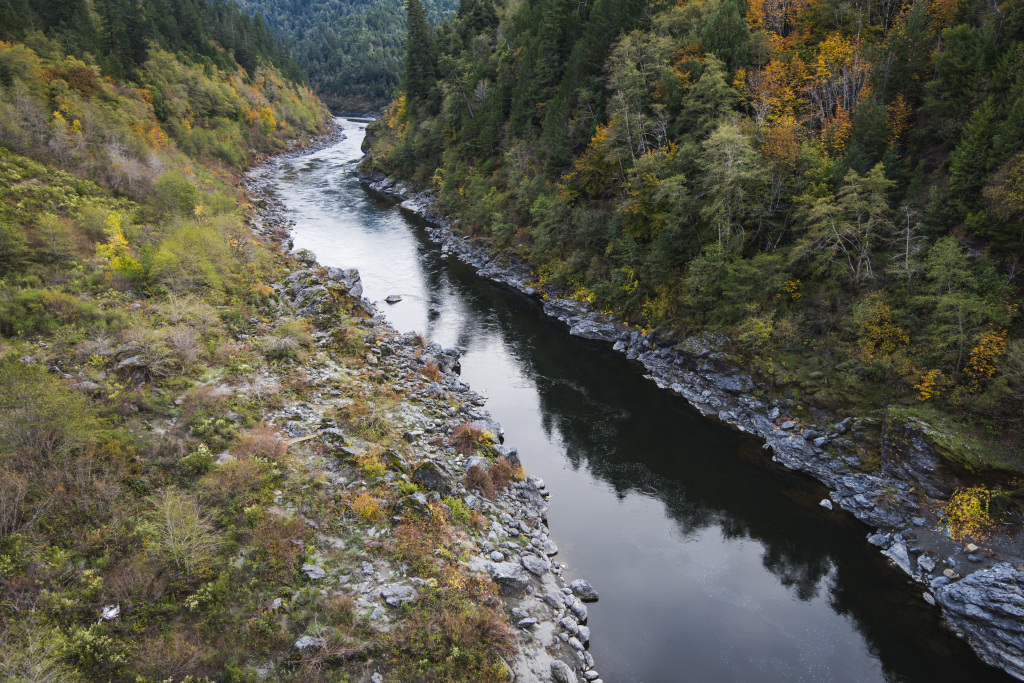Provide shelter from storms
Salmon need streams with an abundance of fallen trees. This “woody debris” influences the shape of stream channels—creating deep pools, clean gravel for spawning and slow water refuges from high water flows. Wood jams also trap nutrients that increase food availability and provide cover from predators.
 The upper Klamath River © Kevin Arnold
The upper Klamath River © Kevin Arnold
The Problem
More than 80% of California’s salmon rivers do not have enough woody habitat. The lack of wood is largely due to historic logging that removed not only standing wood from streamsides, but also woody debris from streams themselves. Though many river-side forests in California are now protected through regulation, it will be many years before these forests are mature enough for trees to start falling into streams naturally.
 Large wood project in Ellsworth Creek Preserve © The Nature Conservancy / David Ryan
Large wood project in Ellsworth Creek Preserve © The Nature Conservancy / David Ryan
The Solution
Restore wood to streams
As now-protected river-side forests mature, to bridge the gap, restoration partners are returning wood to streams manually. Wood can be placed in many different ways depending on a number of factors including the local infrastructure and development footprint, the size and shape of the stream, and availability of wood nearby. Wood might be placed by directly falling river-side trees into streams, placing wood harvested off-site into streams, or by engineering and building wood jams.
Examples
Resources
The Wood for Salmon Working Group is an informal group of agencies, non-profits, landowners, and consultants that help guide restoration practitioners through the permitting process for large wood augmentation projects. Extensive background materials, guidance and contact information are available on their website.




